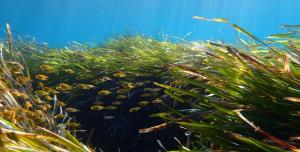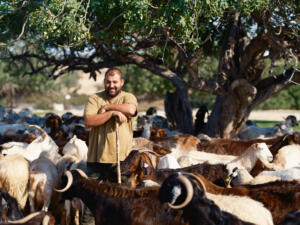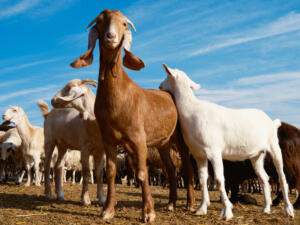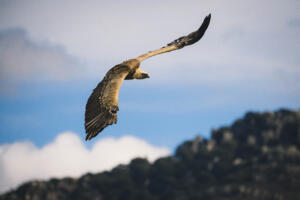
Grants
SHEPHERD VULTURE GUARDIANS: BUILDING BRIDGES TO SAVE VULTURES
€7,650 awarded
Project duration: 12/2023 – 07/2024
Status: ON-GOING
The challenge
According to Flint and Stewart (1983), Griffon Vultures were abundant in the first half of the twentieth century, with up to 140 individuals observed at a single carcass. In the latter half of the twentieth century, frequent poisoning incidents and decreased food availability caused a rapid and sustained population decline to 14 individuals in 2005 (BirdLife Cyprus 2005). A recent Population Viability Analysis (Phipps, W. L. 2020) predicts that with the current 20 individuals and 1-3 breeding pairs, the population will go extinct in the next 15 years due to consistent negative population growth rates, largely driven by the high poisoning frequency. Vultures play a crucial role in ecosystems by reducing disease transmission through consuming carcasses. Conservation efforts for vultures could also lead to a reduction of over 10,000t CO2 emissions per year from transporting dead animals to management facilities (Phipps & Vogiatzakis 2020). The vulture is an ‘umbrella species’ whose conservation can benefit other raptors.
The solution
Shepherds in the remote hills west of Limassol play a crucial role in saving the Griffon Vulture, the most threatened bird in Cyprus. Some shepherds illegally set poison baits for predators, posing a threat to vultures. However, through targeted awareness and empowerment actions, this project aims to turn shepherds into vulture ‘guardians’. By engaging with the shepherd community and promoting alternatives to poison baits, the project team has already seen positive results. They plan to continue this work by distributing ‘save the vulture’ materials to shepherd’s grandchildren and organizing community events focused on vulture conservation. Additionally, they will secure legal support to ensure successful prosecution of wildlife poisoners in future court cases. The ultimate goal is to protect the vultures and deter illegal poisoning activities.
Project’s deliverables
- Conduct meetings with shepherds within the Griffon vulture range to educate them about the vulture’s threats and train them to be ‘vulture guardians’.
- Provide awareness packages for shepherd’s grandchildren in key vulture range areas, including a poster, activity book, cap, and pin badge.
- Organize ‘vulture fun day’ events in larger village communities within the vulture range, with interactive presentations and activities for children.
- Prepare an expert report on wildlife poisoning cases to improve prosecution efforts by relevant authorities.
References
- Flint, P., Stewart, P., 1983. The birds of Cyprus. Zoological Museum, UK.
- BirdLife Cyprus, 2005. Annual Bird Report 2005.
- Phipps, W. L. 2020. LIFE With VulturesCY – LIFE18 NAT/CY/001018, Action A4: Population Viability Analysis of the Cyprus Griffon Vulture population under different management scenarios. Final report. Vulture Conservation Foundation.
- Phipps, W.L. & Vogiatzakis, I.N. 2020. LIFE with Vultures CY – LIFE18 NAT/CY/001018, Action A3: Study on contribution of Griffon Vultures to ecosystem services in Cyprus. Layperson’s summary. Read the report HERE.
A bit about the organization
Founded in 2003, BirdLife Cyprus is the most active non-governmental, non-profit nature conservation organization in Cyprus. Through science, advocacy, education and on the ground conservation work, the organization works to protect wild birds, their habitats and wider biodiversity in Cyprus. The NGO is part of BirdLife International, the global Partnership of nature conservation organizations.





